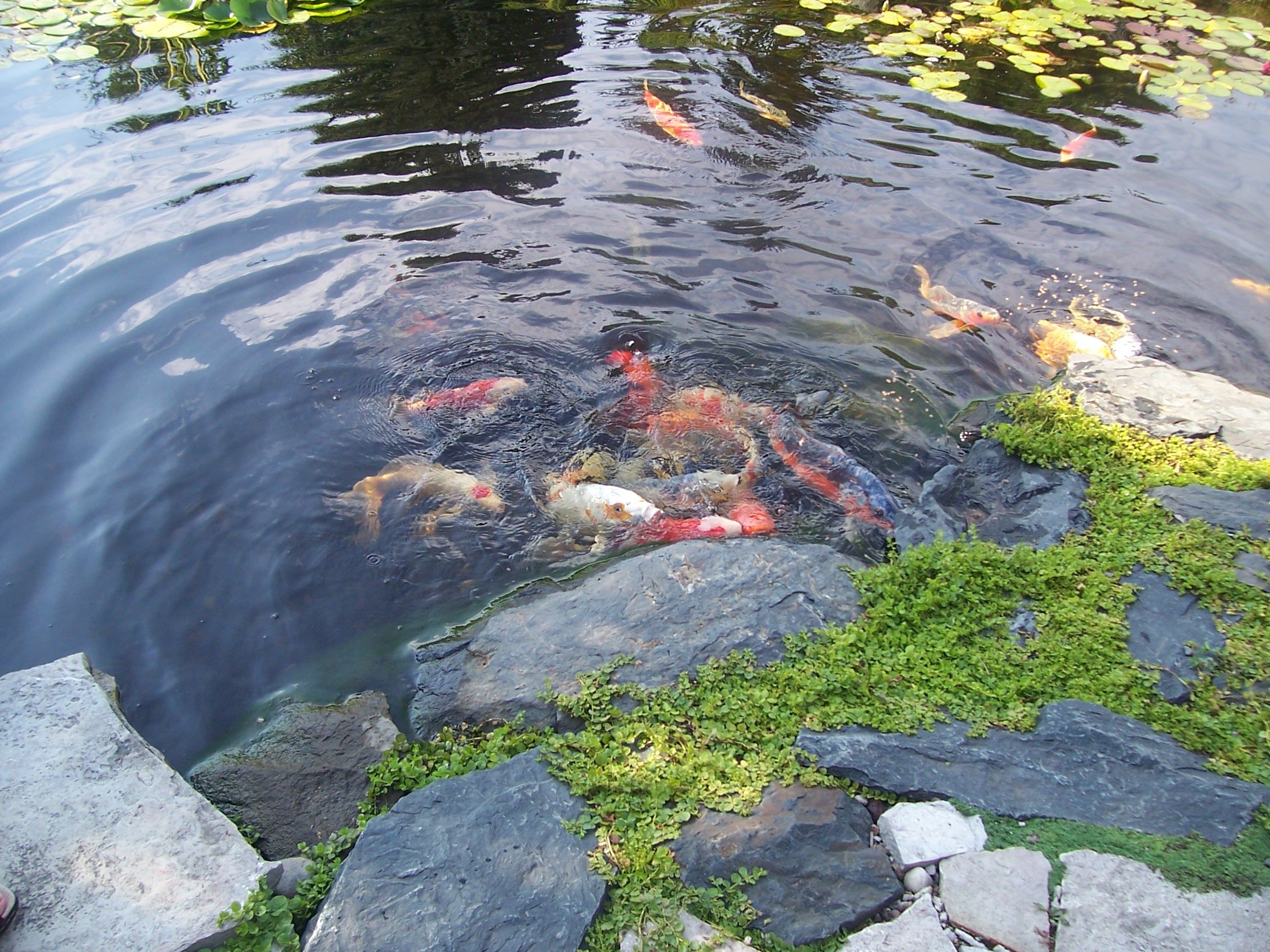Professional backyard water features come in many sizes and styles, but there are three common types that are best for residential projects: fountainscapes, pondless waterfalls or a pond where fish, birds and plants coexist in a natural ecosystem. Whichever type of water feature you choose, they are all fun, entertaining and relaxing!
 Small feature with flowing water
Small feature with flowing water
Fountainscapes are the smallest and simplest of the three options. Water can flow out of a boulder or a natural or fabricated spillway with water disappearing into the ground or even an overflowing vase or urn. They are constructed by installing a water reservoir, which is referred to as a basin or bowl, a pump and the decorative feature of your choice. Fountainscapes can be installed in five steps: (1) Excavate or prepare a space for the reservoir, (2) set the reservoir, (3) hook up the pump, (4) set the decorative feature and (5) add any finishing touches.
 Cascading waterfall
Cascading waterfall
A second type of water feature that is well suited for a residential backyard is a pondless waterfall and stream. Water cascades from a natural rock waterfall, flows down a meandering stream and falls once more, disappearing into the ground.
Pondless waterfalls and streams are built by installing a pump placed in a reservoir. Pipe and fittings are used to pump the water to a waterfall spillway, where it flows down a streambed constructed with underlayment and thick rubber liner. Construction materials are then covered and shaped with natural stone and boulders to blend it into the surrounding landscape.
The pump used in a pondless waterfall and stream must be sized to ensure there is just the right amount of water flowing down. The reservoir is sized so that all of the water in the system can be contained in the event the pump is turned off for any reason. Visualizing the desired size and placement of the pondless waterfall and stream, and having a good design, will ensure that this type of water feature will be fun to watch, listen to and interact with.
 Incorporating fish, plants and more
Incorporating fish, plants and more
A natural ecosystem pond is a third type of water feature that is great for residential applications. The imagination is typically the only limitation there is when it comes to building a natural pond. It can be as small as 3 x 5 feet or as large as 30 x 50 feet or even larger, and typically 2 feet or 3 feet deep.
An ecosystem pond consists of a pump that is installed in a skimmer that filters out loose debris from the water, a plumbing system that pumps the water to the opposite side, a biological filter that filters the water and adds beneficial bacteria, and a thick rubber liner with underlayment beneath it. Some ponds may also utilize an ultraviolet filter or a bog filter. The construction is covered by rocks and boulders to give it a natural look. Aquatic plants and fish are typically introduced to the pond to create an atmosphere similar to those found in a natural setting.
All three of these water features can be built on residential or commercial properties, and will add personal and aesthetic value for many years to come.
Our water feature experts at Ewing can help you decide which one is best for your next project. If you're interested in any of these water features, complete our contact form and select "Lighting and Water Features," or shop now.




